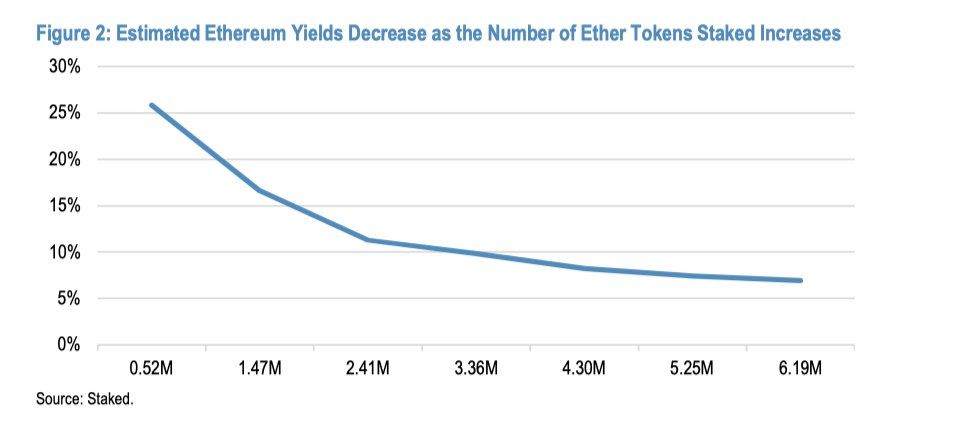TradeFi multinational financial services provider JPMorgan Chase is apparently more bullish on Ethereum staking than the crypto-enthusiasts themselves. In a cryptocurrency market analysis report released to private clients on Jun 30, multiple experts argued that the Ethereum staking “currently a $9bn business for the crypto economy, will grow to $20bn following the Ethereum merge, and could get to $40bn by 2025 should proof-of-work grow to the dominant protocol.” Ethereum plans to fully transition to Proof of Stake (POS) and Ethereum 2.0 in the next couple of years.
“Green” Ethereum Will Soon Reduce Power Consumption By 99.9%
Ethereum staking forms the back bone of the world’s largest smart contract platform shift to the Proof of Stake (POS) – improving participation inclusiveness, security, performance and the energy consumption of the decentralized smart contracts platform. Launched in Dec 2020, the POS run Beacon Chain is protected by 5.8 million Ether (ETH) worth north of $12.8 billion dollars currently and 182,785 validators, who stake the tokens on the network and assist with network processing / security, in lieu of rewards.

JPMorgan report notes that the cryptocurrency and especially Ethereum staking would make for an attractive yield class and is likely to intrigue traditional investors. It lowers the opportunity cost of holding the token and allows participants to generate significant income. The staking offers a lucrative return, currently in the range of 6% annual percentage yield (APY), though it’s likely to go down further as more participants join the platform.
It’s also made prominent in the report that Proof of Stake (POS) offers considerable advantages over Proof of Work (POW) in the resource and energy consumption departments. Since Ethereum staking is more efficient, it doesn’t overpay the activity processors or validators, hence keeping the emission in check and will continue to burn ETH relative to the network, post EIP1559 expected in this month.
Ethereum staking bond, according to some analysts, is likely to become the Internet Bond – a relative measure for digital yield generation as the decentralized protocol is a likely candidate to become the financial activity layer of the blockchain. It’s noteworthy that Ethereum generates the most fees and settles the most value, by far. That’s where most of the Decentralized Finance (DeFi) protocols are situated and has been lately drawing interest from TradeFi / institutional investors.
About Ethereum 2.0 and Ethereum Staking
Ethereum 2.0 is the next big upgrade for the Ethereum network. It will bring Ethereum staking, Proof of Stake (POS), eWASM, and sharding. It will reduce the resources, required to run the Ethereum network, as well as bring scalability and performance improvements.
The Eth2 upgrade will start in three phases. The first Phase 0 Beacon Chain launched on Dec 01 ’20 and introduced the staking feature. This comes after Phase 1 in Q1 2021, which will introduce sharding and allow data storage on shards, however, transactions can’t still be processed.
Phase 2 will make the Ethereum 2.0 truly complete and the network operational. This will happen after its introduction at some point in 2022. It will bring the Ethereum WebAssembly (eWASM) replacing the now operational Ethereum Virtual Machine (EVM). Only after the ETH2 chain has been rolled out, proper execution of smart contracts and transactions can commence. The Eth1 and Eth2 chains will gradually merge with each other.
Ethereum staking allows anyone with 32 ETH (or even fractions through some specialized protocols) to be deposited on the Beacon Chain, put to use directly by the stakers or though a delegated party running a validator node, processing activity and providing security to the network, for constantly generated rewards and fees paid by users.
 cryptoticker.io
cryptoticker.io